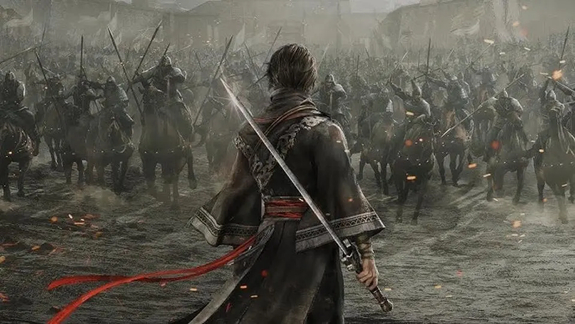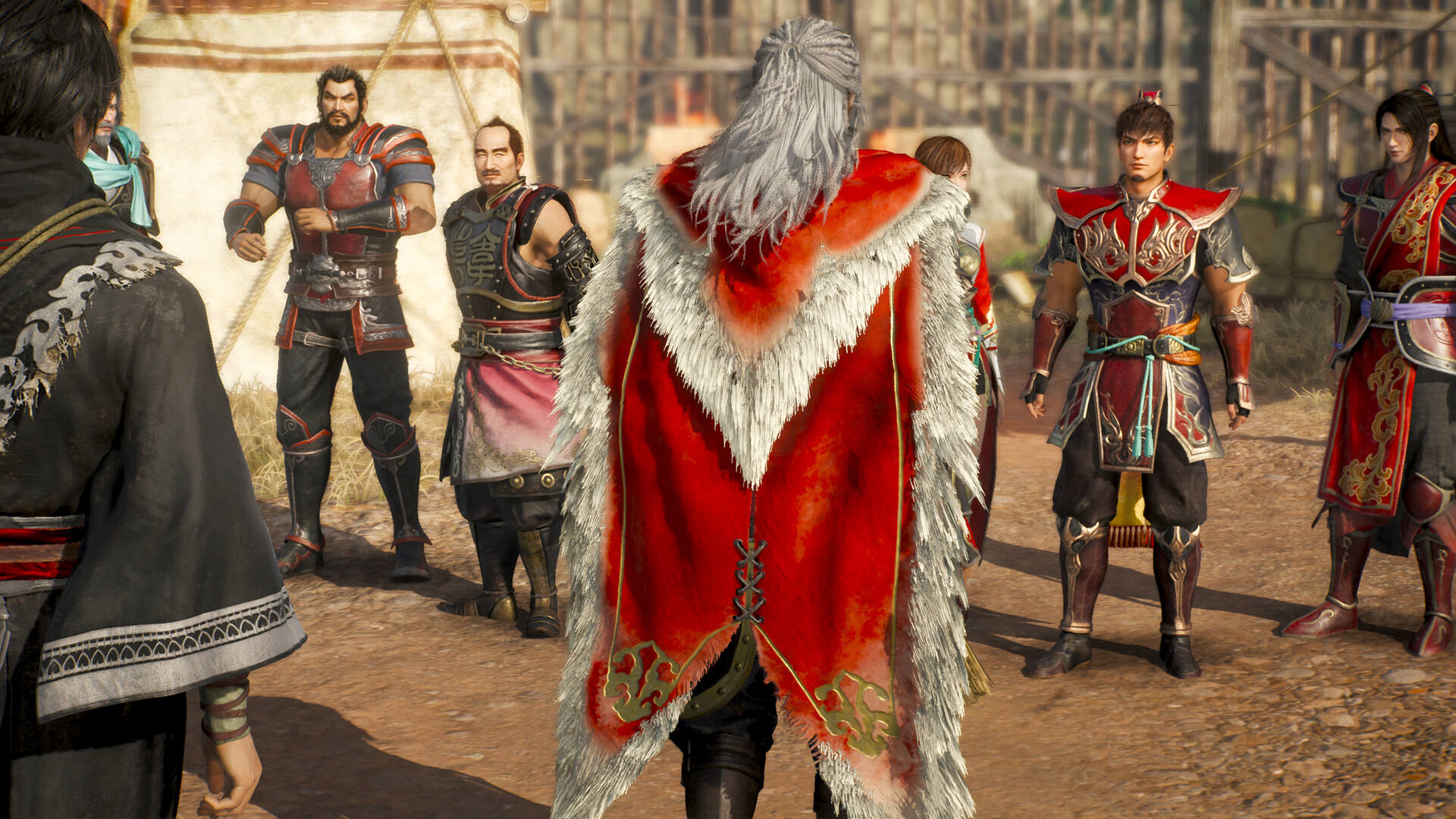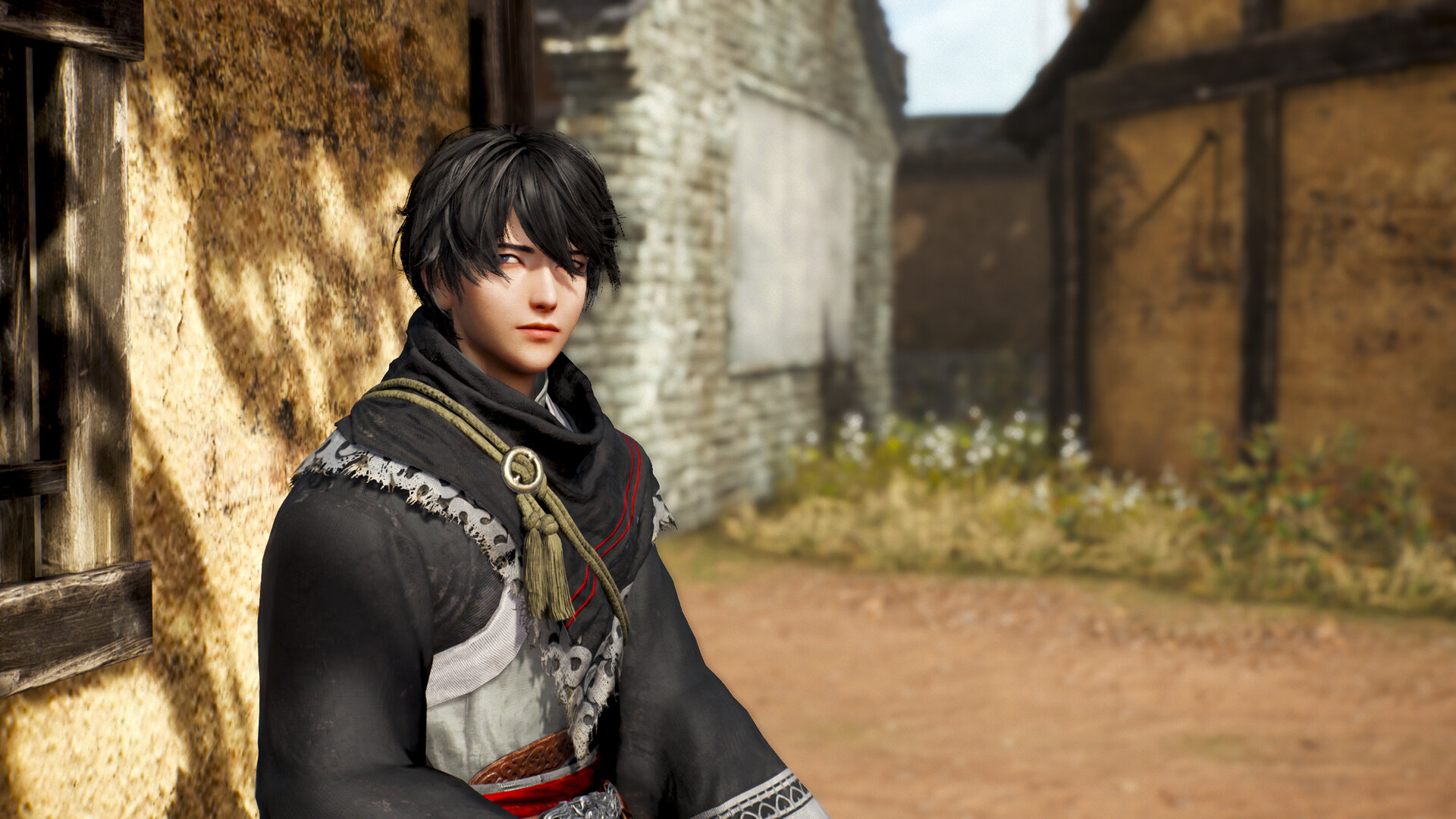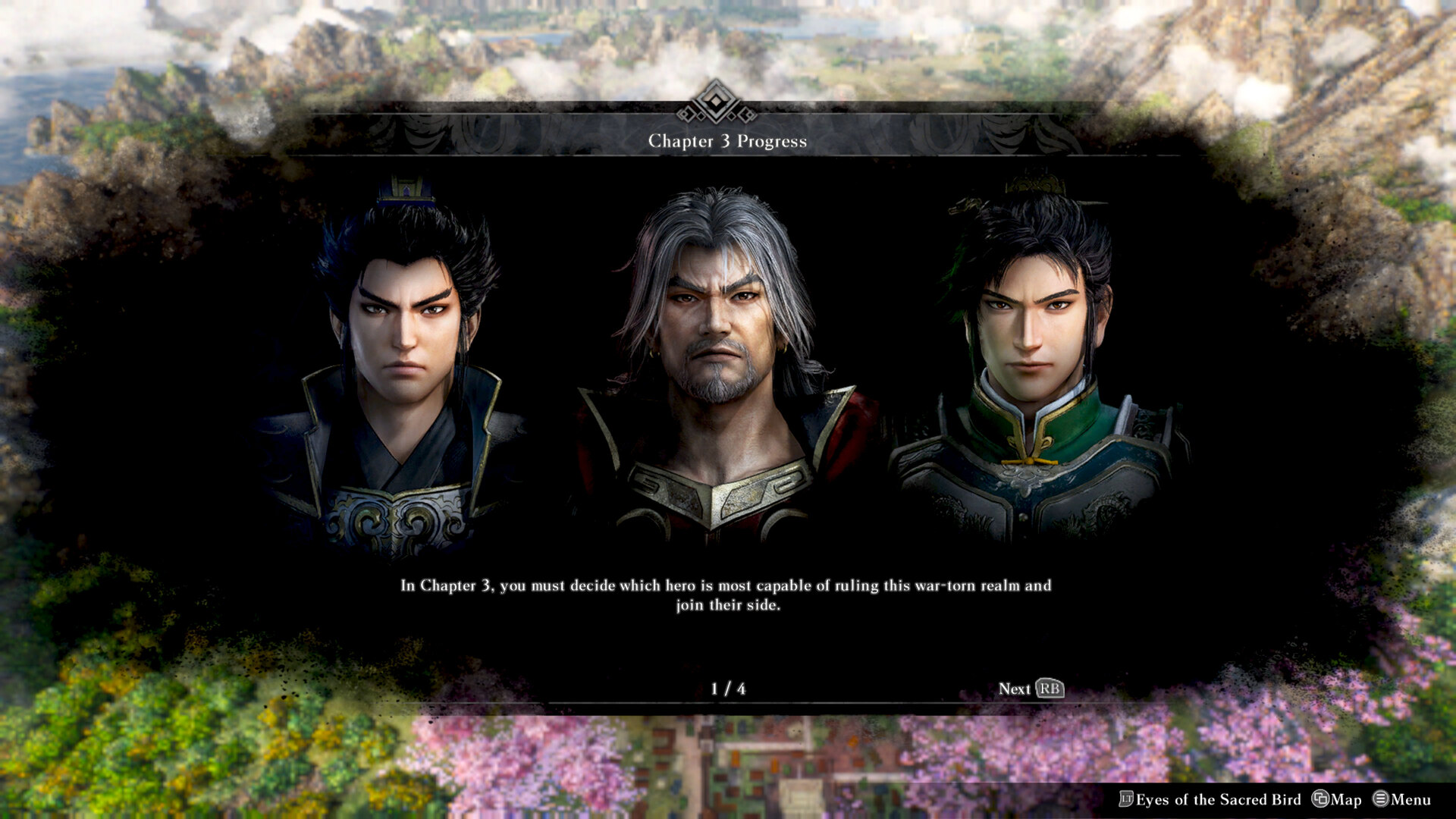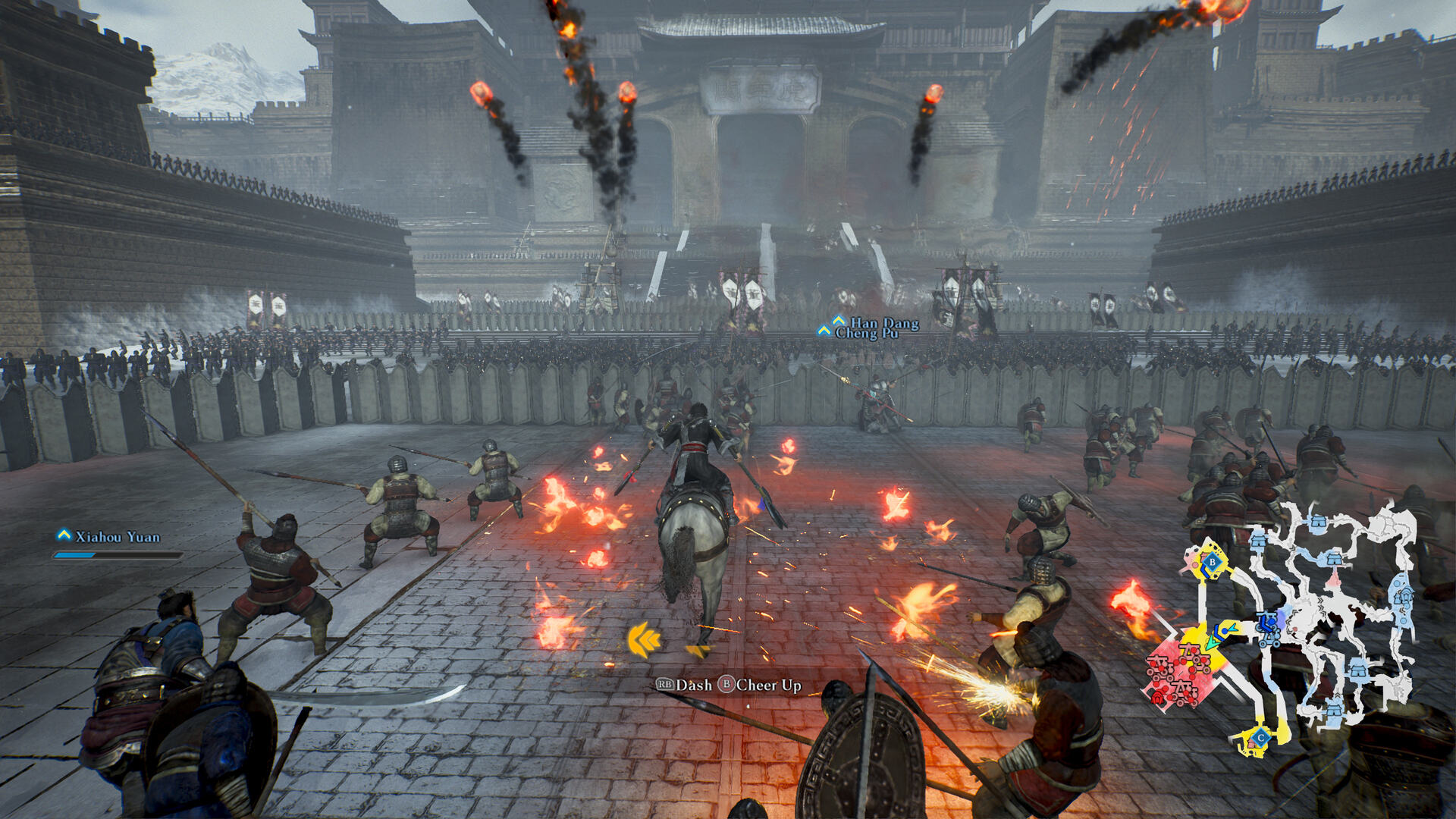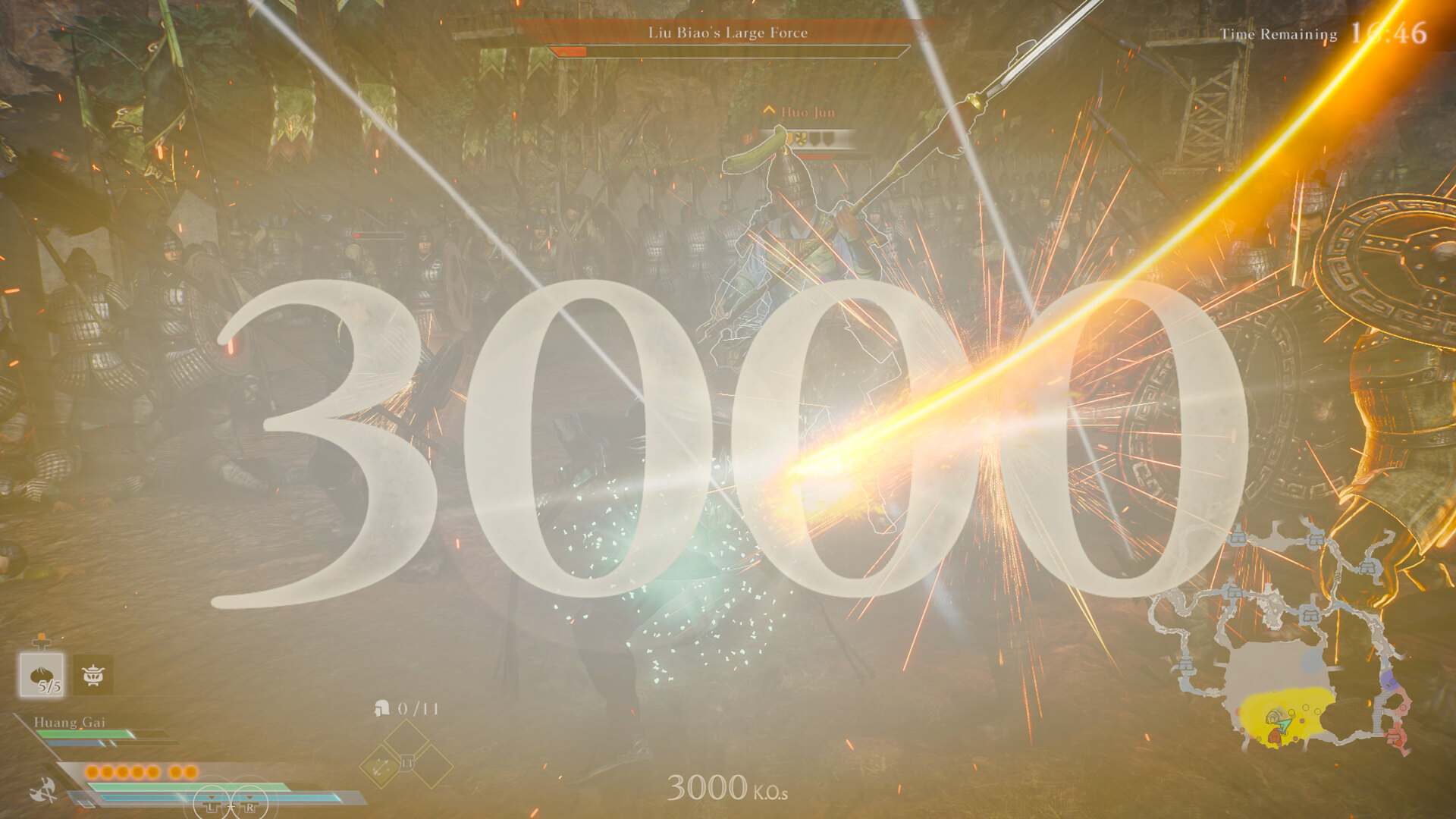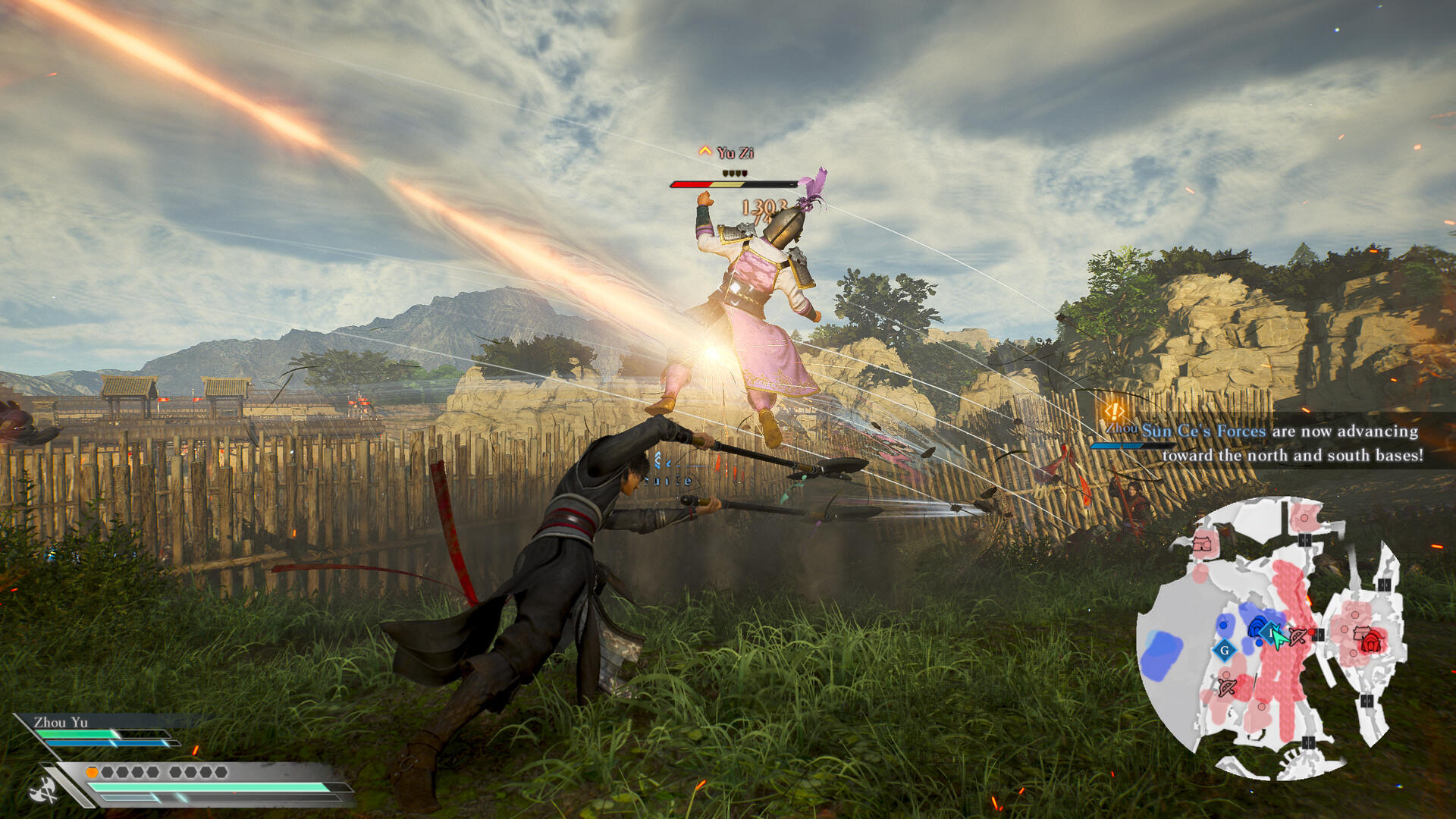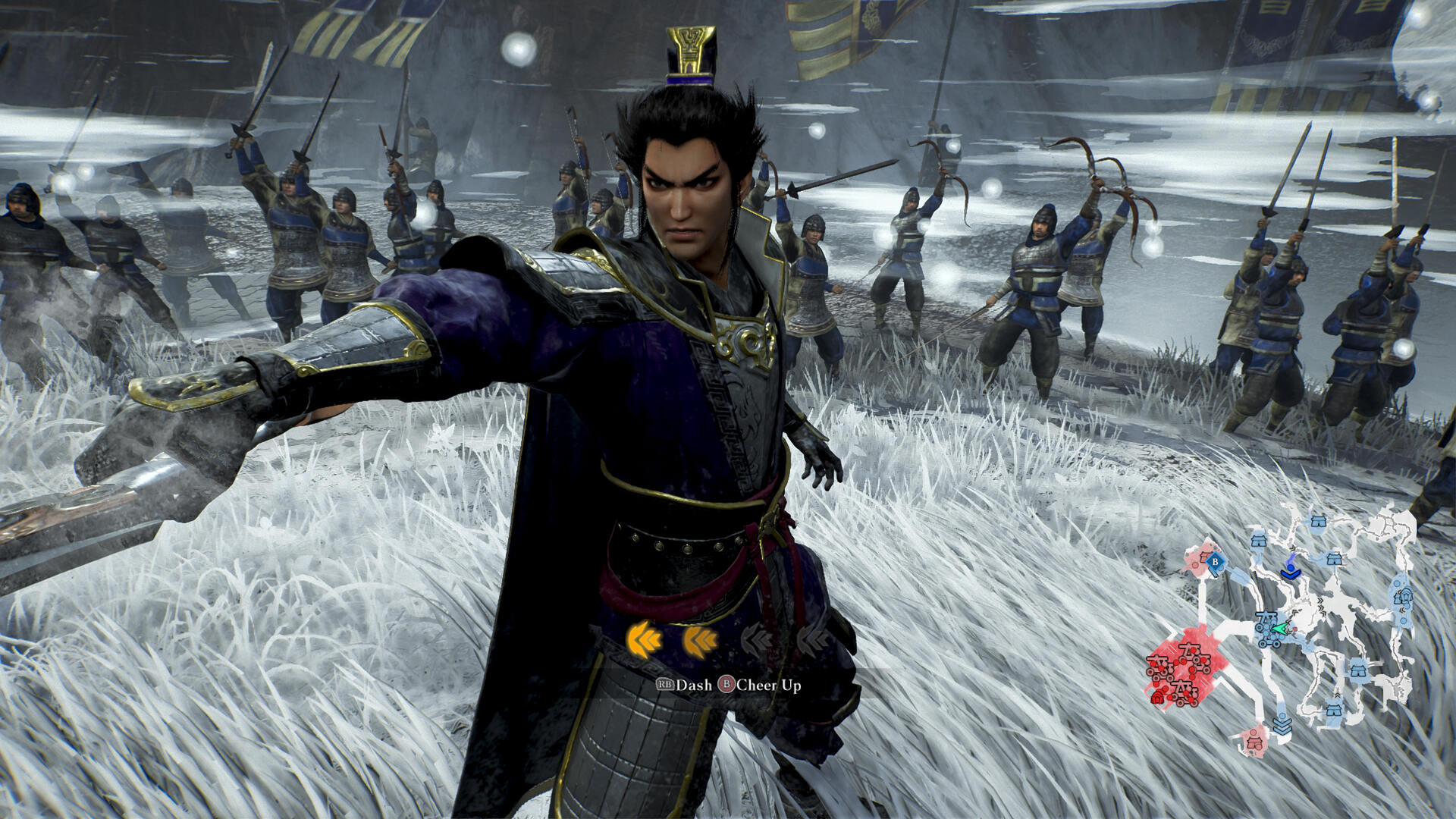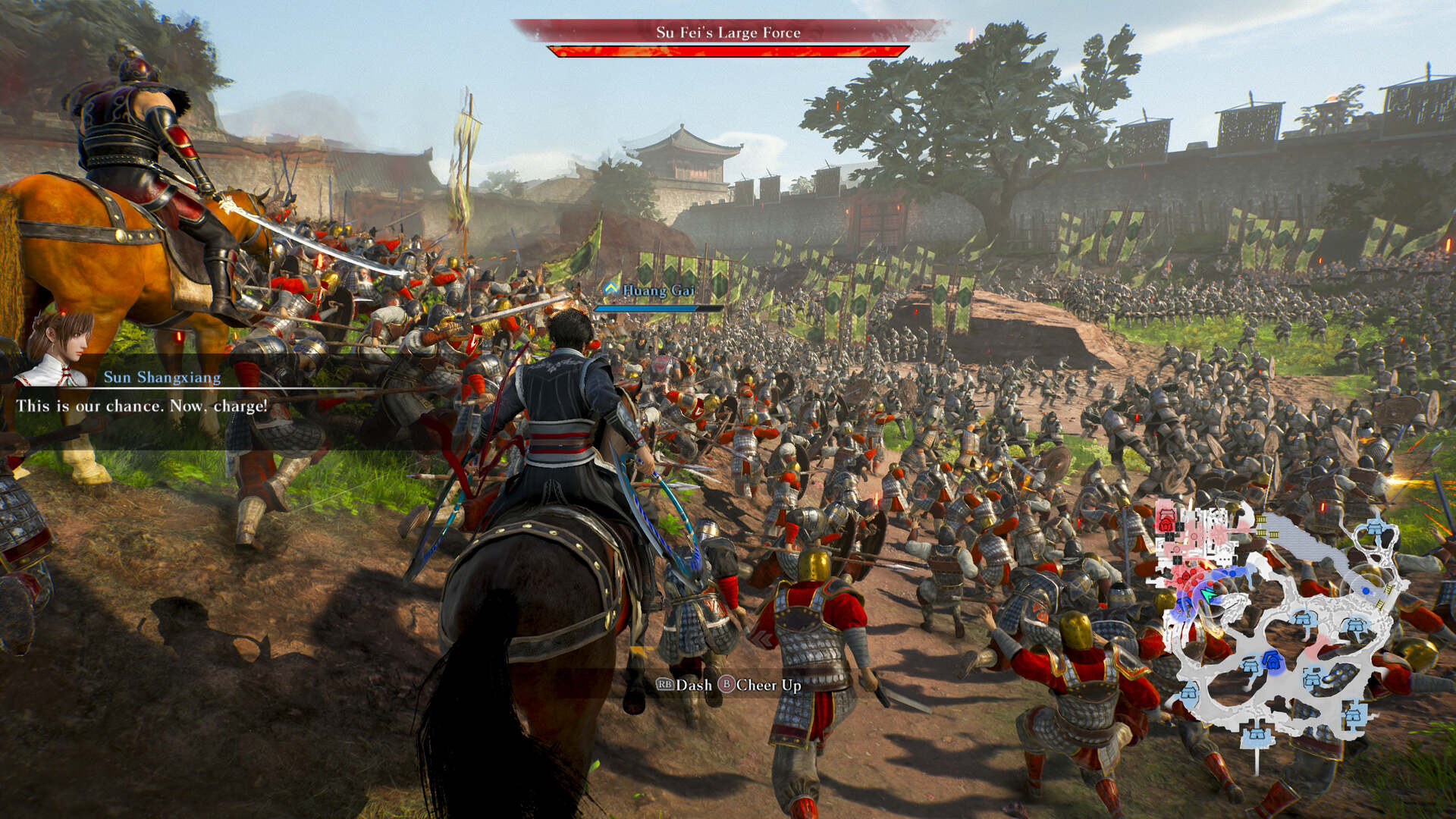Dynasty Warriors has always been a macabre of warrior delights. Between basic combos, setting off Musou abilities, and juggling helpless opponents, you’ll be hard-pressed not to grin at least once in a while playing any of the series entries. With the added benefits of an authentic next-gen experience and an overhaul of the game mechanics, Dynasty Warriors: Origins is an entry into the series that fans will have a lot of fun with.
No longer will you be tasked with picking a character to play the storyline through. You won’t follow the kingdom story as individual characters like Dan Wei, Lui Bei, or Taishi Ci. Rather, you’ll craft someone relatively quickly using a stripped-back character creator. From there, you’ve given an entirely new perspective on the events of the famed Three Kingdoms storyline that Dynasty Warriors is known for.
With a slow start, things begin to snowball as new weapons, battle tactics, and mechanics roll out. From earning your first horse to equipping abilities, opponents will become stricken with fear the further you progress. While I’ve always disliked the term “slow burn,” Origins didn’t entirely click with me until a couple of hours into my first 35-hour playthrough of the game’s campaign.
So does playing as one character versus getting to use one of a plethora of generals and heroes from any of the three kingdoms pay off? Hell yeah, it does.
This review was conducted on the Xbox version of Dynasty Warriors: Origins and made possible thanks to an Xbox review code provided by Koei Tecmo Games. The company did not see the contents of this review before publication.
What is Dynasty Warriors: Origins?

Dynasty Warriors: Origins
Price: $53.89 at CDKeys (Steam) | $69.99 at Amazon (Xbox)
Developer: Omega Force
Publisher: Koei Tecmo Games
Genre: Tactical Action RPG
Install size: ~44.8GB
Playtime: ~30-100 hours
Platforms: Xbox Series X|S, Windows PC (via Steam)
Reviewed on: Xbox
Release date: Jan. 17, 2024
Xbox Game Pass: No
If you don’t know what Dynasty Warriors is or if it is a Warriors game at all, then we’ll get you familiar with this genre. Try to think of the movie 300, where a mere battalion of Spartan soldiers face off against a horde of Persian troops. You’re a one-man wrecking crew hellbent on destroying the forces before you, whatever affiliation they may have. Between squashing rebellions, dueling overly stylized generals, or juggling dozens of adversaries in the air at once, you quickly find out why there have been over 35 entries released in the past 20+ years.
The main focus is the overwhelming sensation of power against significantly larger forces. In Dynasty Warriors: Origins, you play as a nameless hero who’s forgotten their past but has kept their battle prowess. As a result, players go about open battlefields in any direction they see fit in order to win the fight against whatever foe they face, be it the Yellow Turban Rebellion, Dong Zhou, or another significant hero/villain of the Three Kingdoms period.
Taking on these forces, the player will build up their army’s morale, take over rival reinforcement bases, and tackle elite-level leaders that direct enemies to your slaughter of abilities. Between stylized martial weapon attacks, energized mystical abilities, and downright magic forces, you’ll prevail on the soil one soldier at a time until they’ve all fallen before you.
The other main change has been the engine. With massive updates that now allow thousands of enemies on screen at once, players can see their horde of allied soldiers charging into a barrage of enemies. It’s a sight to behold, one that every Dynasty Warriors game from now on needs.
The story of Dynasty Warriors: Origins
The Three Kingdoms storyline is based on real-life historical Chinese events. This relatively known story starts with the fall of the Han Dynasty, giving a platform for the Yellow Turbans, a rebellious force led by the general Zhang Jiao. The struggle during the Yellow Turban rebellion caused three parties of power to continuously find themselves either allied or at odds with one another for years.
These three kingdoms are known as Wei, Wu, and Shu and were led by Cao Cao, Sun Jian, and Liu Bei, respectively. Each garnering dominion over the realm by either force and reason, honor and duty, or respect and loyalty. Each feels it is their right to lead through the circumstances they face.
While previous games in the series typically allowed players to choose someone aligned with one of these three kingdoms, Origins has you battle as a single person. No more will you play as iconic personalities such as Sun Quan, Pang Tong, or my personal favorite, Dian Wei. Instead, you’ll play the nameless hero act. While this trope can be rather tiresome, it does well from this story’s perspective.
You embark on this journey as a general observer of the Three Kingdom saga events, starting just before the Yellow Turban rebellion. Fighting the area’s corruption, plague, and famine, the Yellow Turbans began their story as a force for good. However, many who find power will also find the greed within them, which forces the hands of heroes of the era, Cao Cao, Liu Bei, and Sun Jian, to step up and fight to save the people. In turn, not all of them are able to fight their own greed either.
From here, more corruption will follow. As fans may know, a favorite villain named Dong Zhou will rise to authority, compelling the three leading figures to resist together. After these events, you’ll find yourself making the first genuine decisions by choosing a kingdom to bolster, as shown in Chapter 3. You’ll watch this pick play out over the following two chapters, where the game culminates in a final battle that fans of the Three Kingdoms saga will know all too well once they reach it.
Red is my favorite color, so for simplistic reasons, I had to go with the Sun clan and follow my man, Sun Jian. While I’m very familiar with the events of the Three Kingdoms saga, Origins felt more personal than ever before. A story told a hundred times from slightly different character perspectives just doesn’t hit as well as a fully fleshed-out drama.
Since you only play as a single, nameless character whose presence will be further explained during the story, this allows a much longer campaign to play out. Each decision act is more significant than what I’ve seen play out in previous games. You feel the characters’ anguish during their losses and better understand the rationale behind their decisions.
You can even meet up with allies or foes between battles during private one-on-ones, where characters will give their sentiments toward you. Either respectively or dominantly. These meetings build your relationship with the respective characters, unlocking awe-striking abilities or helpful items.
Given these changes, the story hit better than it ever has before.
The gameplay of Dynasty Warriors: Origins
The polish of Dynasty Warriors: Origins plays off immediately with the sharpest gameplay I’ve ever witnessed in the series. Tight attacks, easy-to-understand feedback, and mechanics that create unique opportunities for players to engage give a sense of completion I haven’t felt from the series before. While playing as a distinct character may seem like it could lack depth, with a dozen armaments to choose from and a significant number of abilities that multiply that previous number, you’ll find a depth of battle options to explore.
Combat
Normal and strong attack combos still exist, but the bread and butter of moves leading to your Musou attacks have changed. Battle Arts are attacks that players can acquire through various means, such as unlock trees, leveling weapons, or raising bonds with comrades. Each Battle Art uses Bravery, which is gathered through attack combos.
Battle Arts come in various forms, such as simple stuns or overpowering splashes rivaling missile explosions. These can be devastating and, combined with a fully unleashed Musou gauge, can take out even the best enemies when used in quick succession. Well, everyone except Lu Bu.
Musou attacks change from their basic form to their omnipotent form, the Ultimate Musou Attack. Each of the dozen weapons has its own unique stylized Musou attack. Basic Musou attacks take up a slither of the bar compared to Rage mode and Ultimate Musou. Using Rage allows you to become invincible and your Bravery gauge to fill up. While Rage mode is timed, using Battle Arts will hasten that decline until you unleash a Musuo attack at the end of Rage mode.
Rage mode became my go-to during crunch times. I constantly saved my Musou meter until I needed it during vital moments against end-level generals or when tremendous forces saved my careless play style. I’m somewhat of a charge-first, regret-actions-later kind of guy.
Battle System
A returning feature allows you to lead a squad of your own soldiers, this time under the name of Tactics. The word “Tactics” sounds like it would be in opposition to my playstyle, but it added a level of chaos to my battle plans that pleased me greatly. Using the new Eyes of the Sacred Bird ability, which slows time and allows you to oversee the battlefield from a better perspective, you can command your squad of allies to launch a volley of arrows, charge, defend, and more.
Morale is a basic element of the gameplay systems. Your side can find themselves in various states between being dominated and doing the dominating. Forms in between are less drastic, but the basic gist is that the lower or higher your morale is, the less or more effective the rest of your allied forces will be. If you’ve taken over the majority of bases in the level, planned successful charges, defeated multiple enemy officers, and more, you’ll find battles are almost impossible to lose unless you die yourself. Keep in mind that this system works the other way as well.
You do get to play as others, although only briefly
Unlocked in Chapter 2, players can battle alongside a companion based on the kingdom they’re fighting for. While I mainly focused on the Wu clan in my initial playthrough, I was still able to battle with the likes of Guan Yu, Zhang Fei, Xiahou Dun, Huang Gai, and other heroes. However, that use is limited.
These companions aren’t available at the start of the level; instead, they build their own Musou gauge as the battle progresses. Once they’ve reached the maximum, you can swap over to them. From here, you can use their personalized battle arts and attacks until you use their Musou gauge, at which point you’ll be changed back to your character once more.
I’m not sure why they decided to limit your ability to play as other characters; it’s a decision I disagree with. Players should have the choice to swap freely. At most, you’ll have the option to assign one of three characters from any of the three kingdoms, so why make it so I get to play as them for like 30 seconds? I just don’t get it.
Should you buy Dynasty Warriors: Origins?
I was devastated initially to hear only a single character would be playable from start to finish. For me, the love of the game always came from the replayability of using different characters in the same battles across multiple playthroughs. Dan Wei would fight for the right to dominate the land under Cao Cao, while Lu Bu did what Lu Bu did best. After that initial shock, things started getting better.
The complexity level of Origins reaches new heights due to the otherwise heretical change. While much of what you’ll find in the game could be found in previous entries, the polish of every component and additional layers has boosted the experience to another level.
Overall, I was thoroughly pleased with my experience. I may have some complaints, but when it comes down to it, this is just a plain ole’ good Dynasty Warriors game that fans will absolutely love. Chopping down enemies never felt so good, and I can safely call this one of my favorite Dynasty Warriors games to date.
I’ll see you on the battlefield, hero.
Dynasty Warriors: Origins releases on January 17, 2024, for $69.99 on Xbox Series X|S and Windows PC via Steam.


